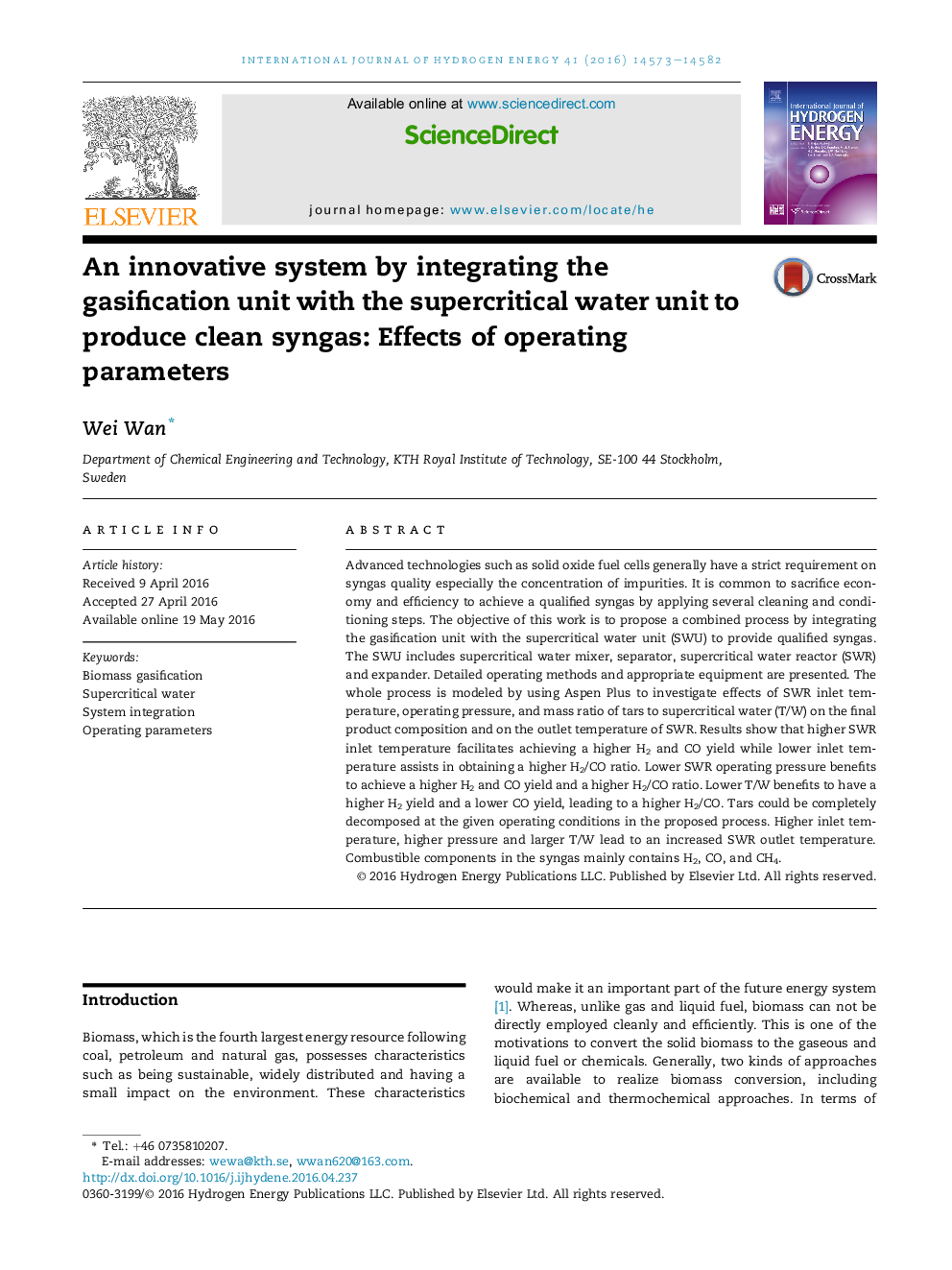| کد مقاله | کد نشریه | سال انتشار | مقاله انگلیسی | نسخه تمام متن |
|---|---|---|---|---|
| 1269335 | 1497392 | 2016 | 10 صفحه PDF | دانلود رایگان |
• An innovative concept for clean syngas production is put forward.
• Gasification unit is integrated with the supercritical water unit (SWU).
• SWU mainly contains supercritical water mixer, separator, reactor and expander.
• A model for the proposed process is developed and validated.
• Effects of operating parameters are investigated based on the developed model.
Advanced technologies such as solid oxide fuel cells generally have a strict requirement on syngas quality especially the concentration of impurities. It is common to sacrifice economy and efficiency to achieve a qualified syngas by applying several cleaning and conditioning steps. The objective of this work is to propose a combined process by integrating the gasification unit with the supercritical water unit (SWU) to provide qualified syngas. The SWU includes supercritical water mixer, separator, supercritical water reactor (SWR) and expander. Detailed operating methods and appropriate equipment are presented. The whole process is modeled by using Aspen Plus to investigate effects of SWR inlet temperature, operating pressure, and mass ratio of tars to supercritical water (T/W) on the final product composition and on the outlet temperature of SWR. Results show that higher SWR inlet temperature facilitates achieving a higher H2 and CO yield while lower inlet temperature assists in obtaining a higher H2/CO ratio. Lower SWR operating pressure benefits to achieve a higher H2 and CO yield and a higher H2/CO ratio. Lower T/W benefits to have a higher H2 yield and a lower CO yield, leading to a higher H2/CO. Tars could be completely decomposed at the given operating conditions in the proposed process. Higher inlet temperature, higher pressure and larger T/W lead to an increased SWR outlet temperature. Combustible components in the syngas mainly contains H2, CO, and CH4.
Journal: International Journal of Hydrogen Energy - Volume 41, Issue 33, 7 September 2016, Pages 14573–14582
